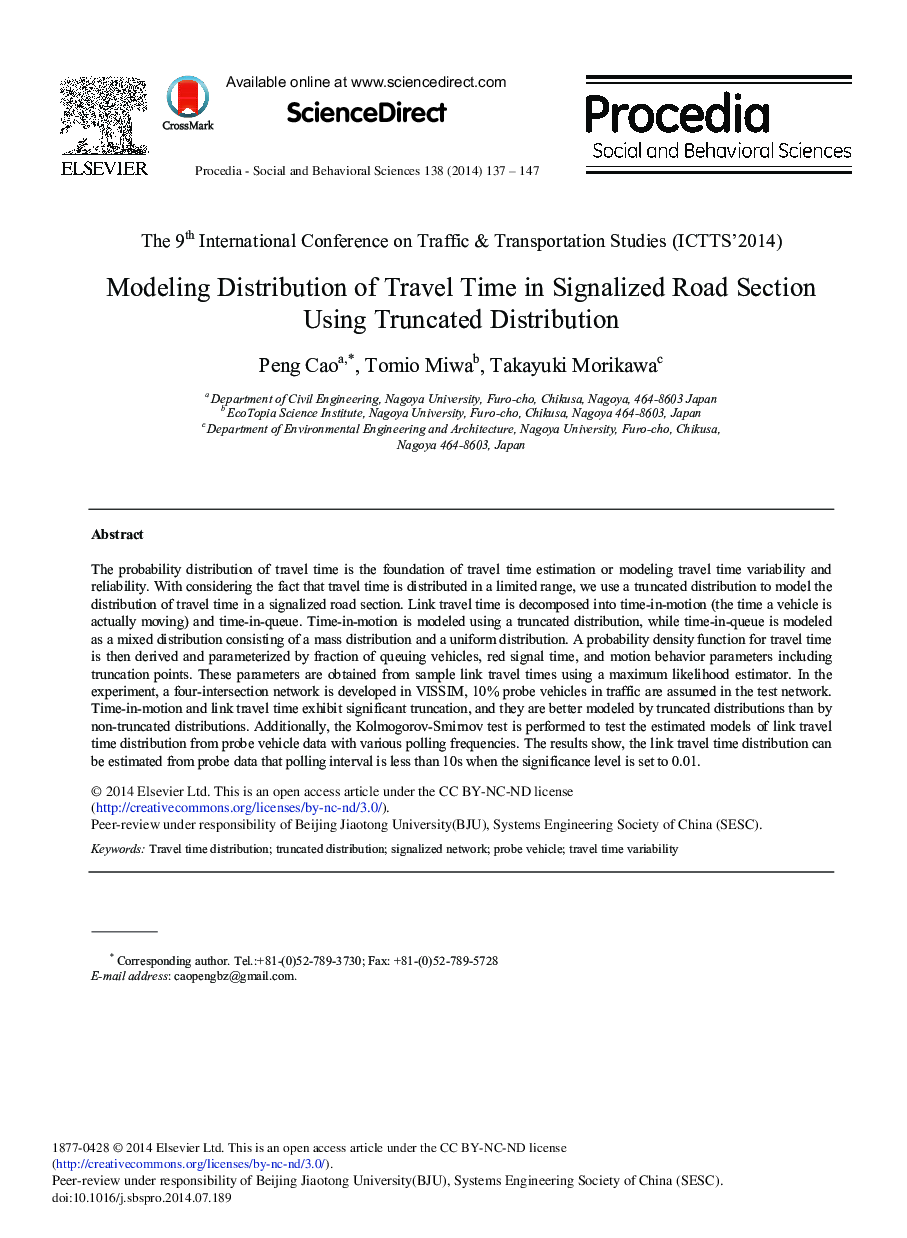| Article ID | Journal | Published Year | Pages | File Type |
|---|---|---|---|---|
| 1114207 | Procedia - Social and Behavioral Sciences | 2014 | 11 Pages |
The probability distribution of travel time is the foundation of travel time estimation or modeling travel time variability and reliability. With considering the fact that travel time is distributed in a limited range, we use a truncated distribution to model the distribution of travel time in a signalized road section. Link travel time is decomposed into time-in-motion (the time a vehicle is actually moving) and time-in-queue. Time-in-motion is modeled using a truncated distribution, while time-in-queue is modeled as a mixed distribution consisting of a mass distribution and a uniform distribution. A probability density function for travel time is then derived and parameterized by fraction of queuing vehicles, red signal time, and motion behavior parameters including truncation points. These parameters are obtained from sample link travel times using a maximum likelihood estimator. In the experiment, a four-intersection network is developed in VISSIM, 10% probe vehicles in traffic are assumed in the test network. Time-in-motion and link travel time exhibit significant truncation, and they are better modeled by truncated distributions than by non-truncated distributions. Additionally, the Kolmogorov-Smirnov test is performed to test the estimated models of link travel time distribution from probe vehicle data with various polling frequencies. The results show, the link travel time distribution can be estimated from probe data that polling interval is less than 10s when the significance level is set to 0.01.
